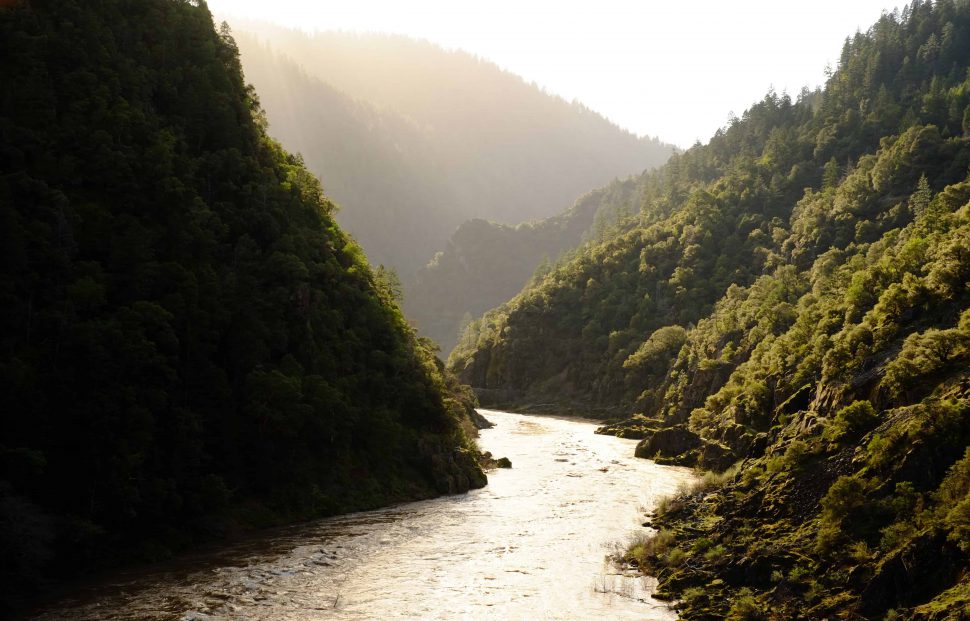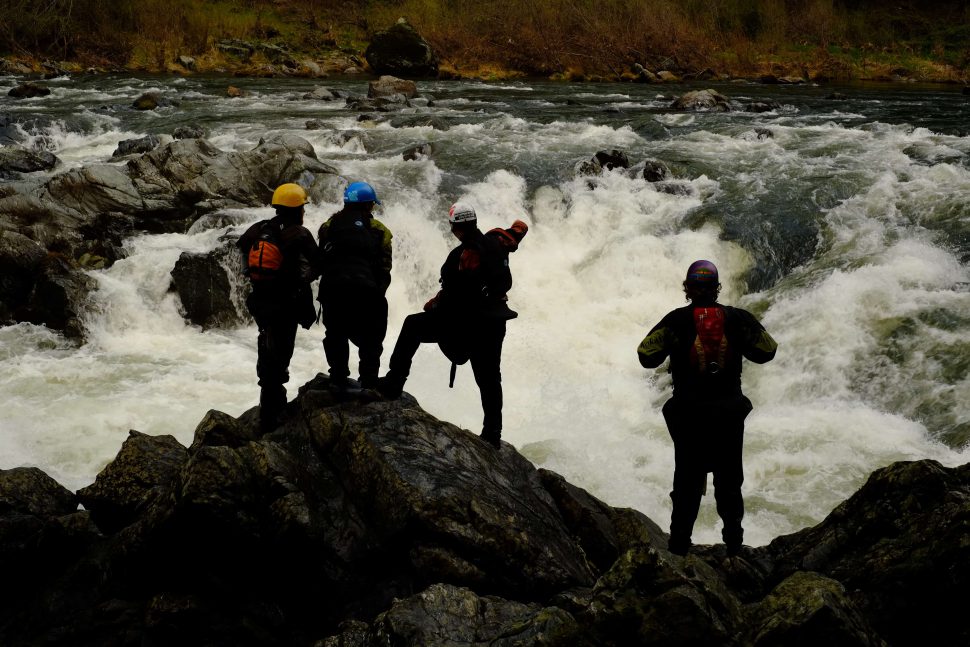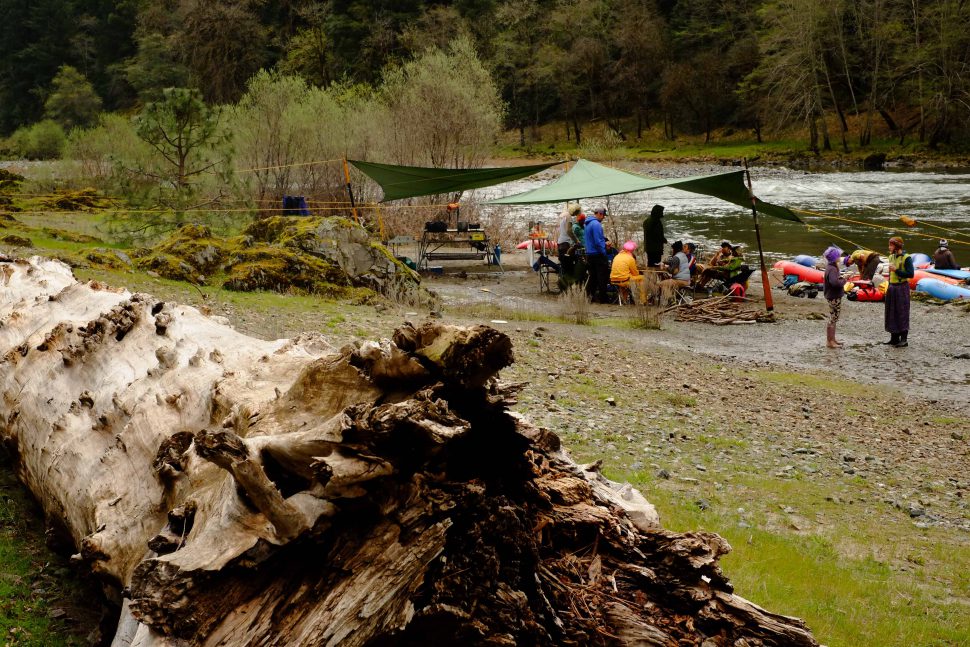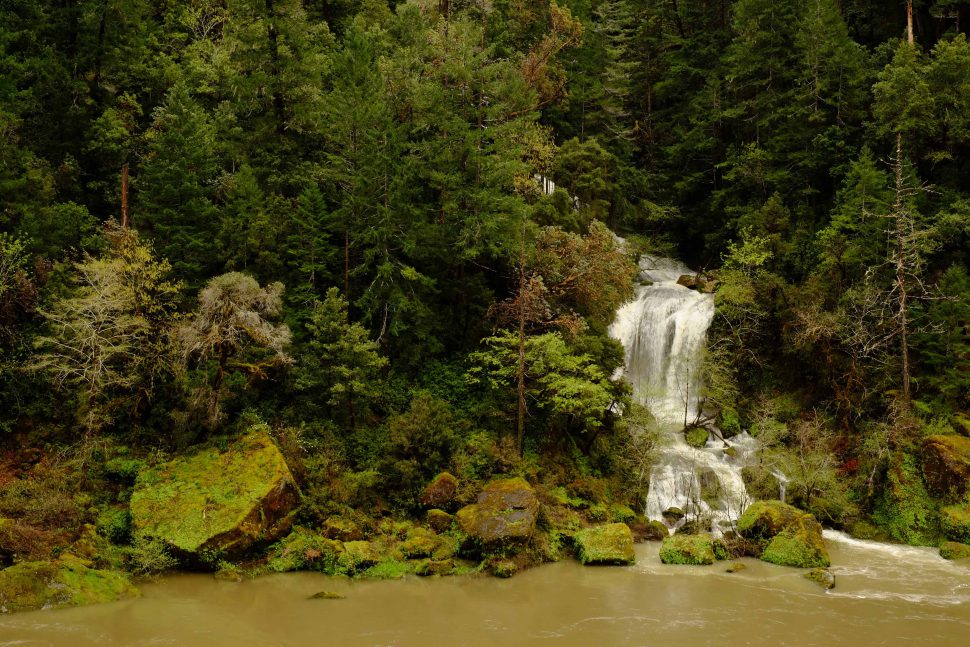As clouds roll across Southern Oregon, the moisture wrung out from Pacific storms can go on to become several things. Moving inland from the coast, a series of mountain ranges that culminate in the volcanic peaks of the Cascades funnel the runoff inexorably downward. Higher elevations accumulate a snowpack that can linger well into summer, while lowland rains nourish ephemeral streams that disappear as soon as the sky clears.

Across the Rogue River’s 5,100 square mile watershed, most of what will become its water arrives in the winter and spring. The wet season and its roiling skies that bring mercurial rises to the Rogue and its tributaries stand in contrast to the summer’s predictable sunshine and steady flows. One or two storms can infuse the snowpack and reservoirs with a season’s worth of moisture, though it often comes in more measured doses.
My own arrival to Southern Oregon this spring coincided with a wet series of storms that pushed the Rogue to above 20,000 cfs (cubic feet per second) in Grants Pass. Aside from providing anyone who was on the river at that time with an exciting ride, that influx of water also put the Lost Creek Reservoir ahead of its normal filling schedule. As the main impetus for reliable flows, filling the lake behind Jess Dam bodes well for anyone planning a trip down the Rogue this summer.
Later in March, another procession of storms barrelled into Southern Oregon and forced some friends and I to abandon plans to boat one of the Rogue’s more challenging tributaries, the Illinois River. That week’s forecast of five to eight inches of rain in the mountains was sure to push the Illinois beyond boatable flows, so with little hesitation we phoned in to change our shuttle and launched on the Rogue instead.

At first, not making it over to the Illinois was a disappointment. Pretty quickly though, the Rogue reminded me why it is such a special place. One of the first things I noticed was the unbelievable range of green tones within the river corridor. Maybe I am color starved after a grey winter, but in my memory the gradient of green within the canyon could have rivaled any fall’s splash of color.

By the time we reached our first camp at Tyee, I had lost track of how many waterfalls we had floated by. It had been raining since before we put on, but the Rogue did not noticeably rise until the afternoon of our second day. As we pushed on through Mule Creek Canyon and Blossom Bar, innumerable waterfalls crashed over the rocky terrain into the swollen Rogue.

After a swift trip through Huggins Canyon, our group landed at Tacoma Camp and watched as the river rose to around 18,000 cfs that night. Laying over the next day provided a great opportunity to hike both upstream to Tate Creek, and downstream to check out Flora Dell and Fall Creek Falls. Some SUP’ers in our group also found their way out to a good surf wave that had formed right in front of camp.
A day later, we came to the take out at Foster Bar and as most trips do, gave some thought to continuing on toward Gold Beach and the sea. We opted for the vans that were waiting for us, but it is an idea that I have not given up on. Hopefully in this green spring there will be a few more chances to float past take out.

